Dr Raye (they/them). Researches the history of wild animals and plants. Currently posting all about herps! :>
Don't wanna be here? Send us removal request.
Text
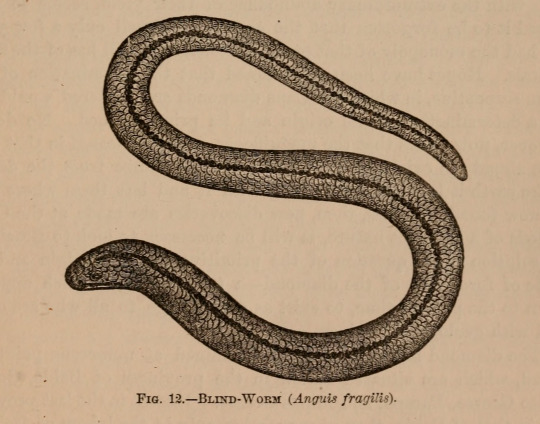
"Blind worm, which is, in fact a legless lizard that is also called a slow worm. The Popular science monthly. September 1882.
Internet Archive
224 notes
·
View notes
Text

I haven't seen any slow worms in two weeks now, so I think that's the end of the 2023 season here in the south of Wales...
First sighting: 2nd April
Peak count: 8 at one time
Breeding this year? Yes
Last sighting: 7th October
I always miss my friends terribly over the winter, so if you live somewhere where your amphibians & reptiles are not hibernating right now, please post photos!
1 note
·
View note
Text
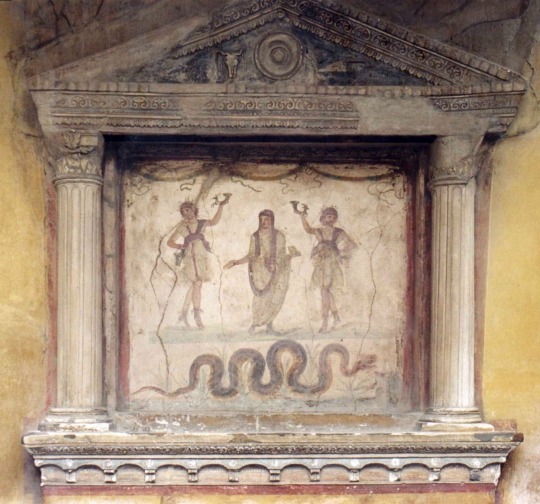
In Ancient Rome, snakes were not feared and hated to the same degree that they are today. Every household had a shrine - the lararium where the spirit of the household (the genius) lived with the household's guardians (the lares). The genius was often represented in artwork as a snake, and snakes also often represented the spirits of ancestors and sometimes (more figuratively) their immortality in the afterlife.
Image - Lararium in the House of the Vettii in Pompeii, photo by Patricio Lorente (licence CC BY-SA 2.5)
70 notes
·
View notes
Text
It's only a couple of weeks now until all our local herps go to sleep. They are still awake for now though, and don't these slow worms make such beautiful shapes with their bodies!?

6 notes
·
View notes
Text
This week the leaves on the old Rowan have fallen down into the pond. The Palmate Newts seem to have gone off in disgust, but the Slow Worms are sticking around a bit longer, cuddled into the warmest point of the compost heap.
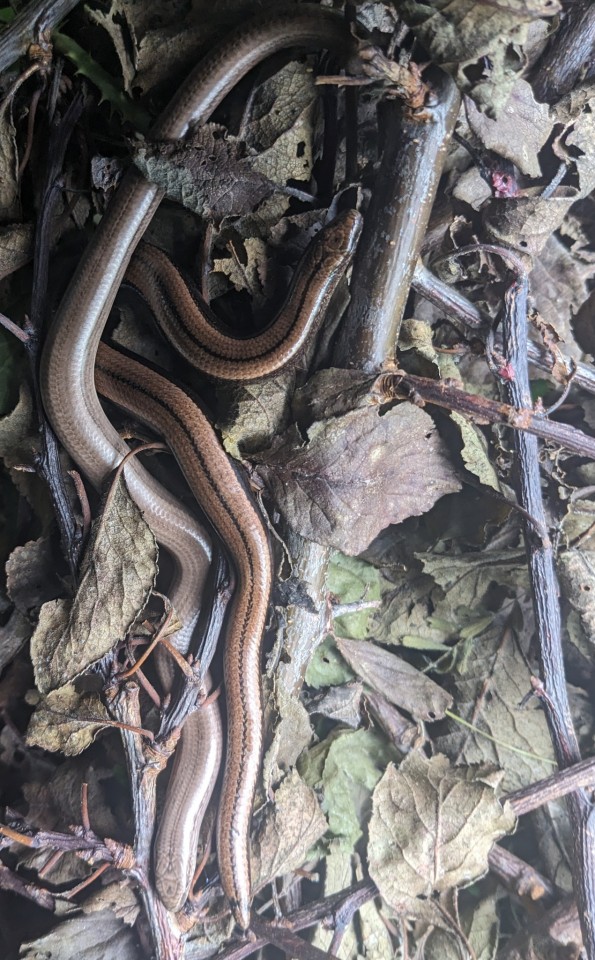
2 notes
·
View notes
Text
The rain has stopped, the clouds have gone, and all the little dragons have come out to play.

8 notes
·
View notes
Text

Then, with a flick of its tail, it was gone.
1 note
·
View note
Text
Happy Slithers Saturday!
This week in Wales there are newborn Slow Worms everywhere, and the Palmate Newt efts are just getting cuter and cuter!!
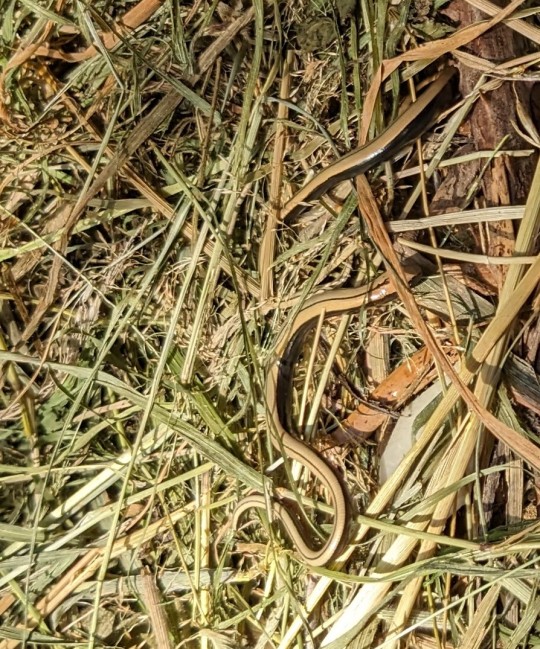

#amphibians#reptiles#herps#lizards#newts#slow worm#palmate newt#lissotriton helveticus#anguis fragilis
3 notes
·
View notes
Text
How the water spirit called Ale was cursed by the Olympian Gods for inventing a new drink, but she didn't care because she got a pet frog
Ale first was [a] Lake Nymph who by Ceres came To be ennobled; eclips'd Bacchus Name, Oppos'd bright Phoebus Glory. Some gross Cloud Threw oft on those Apollo had endow'd: Hence the brown Nymph by angry Bacchus frown, First was disgrac'd by Phoebus, then damn'd down To dark Abodes: Dwells since in Muddy Lakes Of dirty Towns, where the long hissing Snakes Infuse their Venome: taken with th'abode Of Croaking Frog, and of the Stygian Toad
- Lewkenor (1693) Metellus his dialogues, the first part, containing a relation of a journey to Tunbridge Wells

2 notes
·
View notes
Text
May the Evet and the Tode Within thy Banks have no abode, Nor the wilie, winding Snake Her voyage through thy waters make.
- Henry Vaughan (1651) Olor Iscanus, a poem to the River Usk in Wales.

1 note
·
View note
Note
I don't think I heard about the salt regarding Theoi and winged serpents. Mind spilling the tea?
I'm glad you asked!
First of all, Theoi claims Ophies Amphipterôtoi (Οφιες Αμφιπτερωτοι) is another name for Herodotus's winged serpents.
It's not. I checked. I went through the Greek and English versions and found πτερωτοὺς ὄφις, ὄφιες ὑπόπτεροι and ὑπόπτεροι ὄφιες, but not that variant. I thought I might finally find proof of the antiquity of "amphiptere", but no such luck.
Second, it insists that the snakes are feathery-winged.


And cites Herodotus 2. 75. 1-4...

but completely misses the part following the cited bit! After describing the ibis, Herodotus says:
The serpents are like water-snakes. Their wings are not feathered but most like the wings of a bat.
Like... explicitly not feathered.
And I know it's a small thing, but it's Relevant To My Nice Interests, and it worries me that if Theoi can miss things like that... what else could also be incorrect? :(
46 notes
·
View notes
Text

Happy Slithers Saturday! Is that a new Slow Worm born already?
4 notes
·
View notes
Text

Hope you have a good slithery day!
4 notes
·
View notes
Text
A quartet of ancient Egyptian sacred animals all in one piece:


#Scarab with a cross-hatched #lion, #crocodile and #cobra on base
2nd Intermediate Period, 1700–1550 BCE
Steatite, 2.2 cm (7/8 in.)
Museum of Fine Arts, Boston 88.1050: https://collections.mfa.org/objects/133377/scarab-with-a-crosshatched-lion-crocodile-and-cobra-on-bas
14 notes
·
View notes
Text
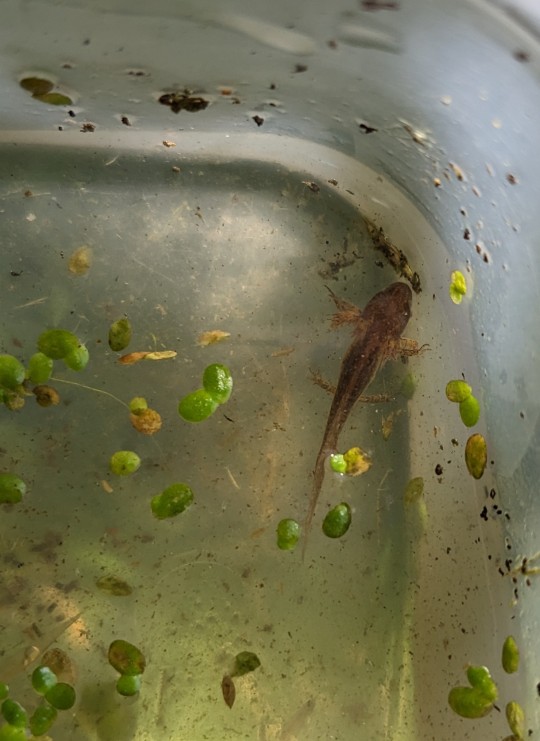
Exciting news. - I did not even know the newts in the garden were breeding! But this eft is looking almost ready to come out!
It has been less than two years since I put the pond in!
2 notes
·
View notes
Text

A happy day for little dragons!
Have you heard the folklore of how toads used to be found living inside solid rocks?
Here is Robert Plot in The Natural History of Stafford-shire (1686):
The Toad must be reckon'd as one ; which though living both at land, and in the water, is sometimes most wonderfully excluded from both, having been frequently found close imprison'd within the middle of solid blocks of Stone, without any perceivable rift or cleft, either whereby they were first admitted, or were supplied with Air, during their abode there; a thing so frequent in this County, that I met with instances of it in divers places: and first at Horton, at the house of Mr. Edg, where in his barn wall, he shewed me a hollow Stone, which being clove by the Mason had a live Toad included in it; this he told me he saw himself, and that it dyed quickly, after it was taken forth.
1 note
·
View note
Text
Another for #WorldTurtleDay on a #TurtleTuesday + #TwoForTuesday:

Albert Eckhout (Dutch, c.1610–1665) Study of Two Brazilian Tortoises, 1640 oil and paper on panel, 30.5 cm (12 in) x 51 cm (20 in) Mauritshuls collection
species ID = Red-footed tortoise (Chelonoidis carbonarius)
"One of the artists in Johan Maurits’s entourage [in Dutch Brazil] was Albert Eckhout. Eckhout recorded the Brazilian people, flora and fauna in drawings and paintings. Like these two red-footed tortoises with their scaly heads, shells with geometric patterns and mouths full of sharp teeth. Eckhout painted them on paper.
The animals are grunting threateningly at each other, as the males do during the breeding season. But Eckhout made the animals more exciting than they actually are – tortoises do not in fact have teeth."
120 notes
·
View notes